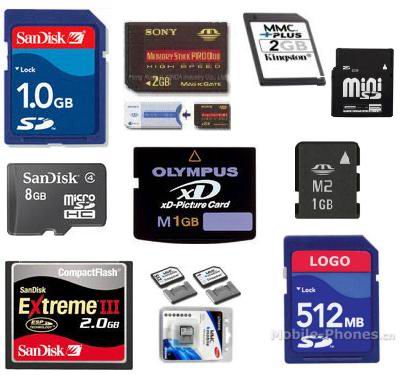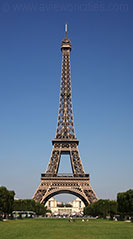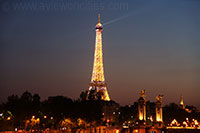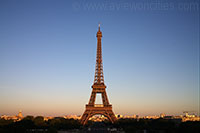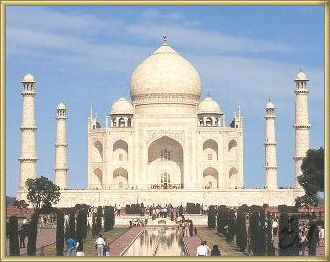HDDs record data by magnetizing a ferromagnetic material directionally, to represent either a 0 or a 1 binary digit. They read the data back by detecting the magnetization of the material. A typical HDD design consists of a spindle which holds one or more flat circular disks called platters, onto which the data is recorded. The platters are made from a non-magnetic material, usually glass or aluminum, and are coated with a thin layer of magnetic material. Older disks used iron(III) oxide as the magnetic material, but current disks use a cobalt-based alloy.
The platters are spun at very high speeds. Information is written to a platter as it rotates past mechanisms called read-and-write heads that operate very close over the magnetic surface. The read-and-write head is used to detect and modify the magnetization of the material immediately under it. There is one head for each magnetic platter surface on the spindle, mounted on a common arm. An actuator arm (or access arm) moves the heads on an arc (roughly radially) across the platters as they spin, allowing each head to access almost the entire surface of the platter as it spins. The arm is moved using a voice coil actuator or (in older designs) a stepper motor.
The magnetic surface of each platter is divided into many small sub-micrometre-sized magnetic regions, each of which is used to encode a single binary unit of information. In today's HDDs each of these magnetic regions is composed of a few hundred magnetic grains. Each magnetic region forms a magnetic dipole which generates a highly localized magnetic field nearby. The write head magnetizes a magnetic region by generating a strong local magnetic field nearby. Early HDDs used an electromagnet both to generate this field and to read the data by using electromagnetic induction. Later versions of inductive heads included metal in Gap (MIG) heads and thin film heads. In today's heads, the read and write elements are separate but in close proximity on the head portion of an actuator arm. The read element is typically magneto-resistive while the write element is typically thin-film inductive.
In modern drives, the small size of the magnetic regions creates the danger that their magnetic state be lost because of thermal effects. To counter this, the platters are coated with two parallel magnetic layers, separated by a 3-atom-thick layer of the non-magnetic element ruthenium, and the two layers are magnetized in opposite orientation, thus reinforcing each other. Another technology used to overcome thermal effects to allow greater recording densities is perpendicular recording, which has been used in some hard drives as of 2006.
Hard disk drives are sealed to prevent dust and other sources of contamination from interfering with the operation of the hard disks heads. The hard drives are not air tight, but rather utilize an extremely fine air filter, to allow for air inside the hard drive enclosure. The spinning of the disks causes the air to circulate forcing any particulates to become trapped on the filter. The same air currents also act as a gas bearing which enables the heads to float on a cushion of air above the surfaces of the disks.
The platters are spun at very high speeds. Information is written to a platter as it rotates past mechanisms called read-and-write heads that operate very close over the magnetic surface. The read-and-write head is used to detect and modify the magnetization of the material immediately under it. There is one head for each magnetic platter surface on the spindle, mounted on a common arm. An actuator arm (or access arm) moves the heads on an arc (roughly radially) across the platters as they spin, allowing each head to access almost the entire surface of the platter as it spins. The arm is moved using a voice coil actuator or (in older designs) a stepper motor.
The magnetic surface of each platter is divided into many small sub-micrometre-sized magnetic regions, each of which is used to encode a single binary unit of information. In today's HDDs each of these magnetic regions is composed of a few hundred magnetic grains. Each magnetic region forms a magnetic dipole which generates a highly localized magnetic field nearby. The write head magnetizes a magnetic region by generating a strong local magnetic field nearby. Early HDDs used an electromagnet both to generate this field and to read the data by using electromagnetic induction. Later versions of inductive heads included metal in Gap (MIG) heads and thin film heads. In today's heads, the read and write elements are separate but in close proximity on the head portion of an actuator arm. The read element is typically magneto-resistive while the write element is typically thin-film inductive.
In modern drives, the small size of the magnetic regions creates the danger that their magnetic state be lost because of thermal effects. To counter this, the platters are coated with two parallel magnetic layers, separated by a 3-atom-thick layer of the non-magnetic element ruthenium, and the two layers are magnetized in opposite orientation, thus reinforcing each other. Another technology used to overcome thermal effects to allow greater recording densities is perpendicular recording, which has been used in some hard drives as of 2006.
Hard disk drives are sealed to prevent dust and other sources of contamination from interfering with the operation of the hard disks heads. The hard drives are not air tight, but rather utilize an extremely fine air filter, to allow for air inside the hard drive enclosure. The spinning of the disks causes the air to circulate forcing any particulates to become trapped on the filter. The same air currents also act as a gas bearing which enables the heads to float on a cushion of air above the surfaces of the disks.


 06:48
06:48
 HSojitra
HSojitra


